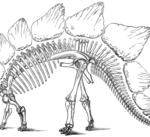Quick, how do you normally see a character portrayed in a visual media as ‘drowning’?
Very visible, loud behavior, right? Arms up, head potentially bobbing, screaming for help?

Alright, maybe. Getting there. That’s called “aquatic distress” and may precede drowning. If your character has gotten to the ‘face down float’ you’ve missed a bit.
But there are several things that happen when you lift your arms to wave in water:
Firstly, you will sink. Going vertical is actually a technique to put yourself under the water because it reduces the surface tension.
Sinking of course means your head goes underwater.
Head going underwater means you’re not breathing.
So your character may do this. Sure. But I hope you weren’t attached to them, and what did you teach the readers drowning looks like? Drowning is the third most common unintentional death in the world and has been a major cause of deaths throughout history. We like to live near water.
Very likely the signs of drowning are more subtle:
*You may not see them at all, not unless the water is very clear
*Their head may be tilted up, but if they can’t keep themselves afloat or coordinate enough to roll on their back, their lips and nose may still fill with water. This is a response not under conscious control.
*Arms be out to the side, possibly paddling down, to increase buoyancy, but coordination is very hard and not likely to happen. They may also appeal to be “climbing an invisible ladder” similar to a non-productive “doggy-paddle”.
*They may look fearful and unable to focus.
*They may not be able to call out because of the whole ‘not breathing’ thing, and may instead gasp.
This can be misinterpreted as ‘playing’ in the water. But then it gets weird as your body tries to ‘help’.
See, when I say that a drowning person is panicked, I don’t just mean they’re overcome with fear.
I mean the compulsion to breathe has become an all-consuming obsession. It is the one and only thought they may have. I mean you could take the kindest, gentlest person on the planet and they still will very likely hold you under the water to give themselves a chance to breathe. I mean a drowning person will pull the person down trying to save them. This is why it’s recommended you throw objects they can grab onto, or extend poles.
It is also entirely possible to be at risk for drowning in very shallow water, or even water that you can stand in.
How?
I was at the waterpark the other day with a friend, enjoying some time in the wave pool. Now I’ve experienced the sensation of drowning about…four times now, because God doesn’t seem to love me and no matter how strong of a swimmer I get, things can still come up. You get knocked out falling off a jet ski. The air you were holding so carefully gets knocked out of you when you come up and hit an object that moved over you, and now you have to move without just the oxygen remaining. The waves keep coming, and coming, and you can’t catch your breath before the next one.
In the wave pool there was a child around early elementary school age who had fallen off the inner tube he shared with his sibling. At first he seemed like a kid playing in the waves, but he wasn’t keeping his head above water. Was he getting air? Who knows. But he wasn’t coordinated. The waves pushed him towards the shallower end where he could stand during the trough, but the waves were coming right after the other. The little one turned his back to the waves and walked as best he could, but he was crying without saying anything. His lungs weren’t expanding.
I was already working my way towards him at this point, but all these signs indicated that possibly his lungs were spasming to keep more fluid from coming in.
You cannot breathe like this. You cannot pull air in, exchange the gases, and exhale it as needed. Your body has decreed that in order to save you, nothing is coming in for now. This can be considered a form of ‘dry drowning’ and is the sensation of suffocation. This is called “laryngospasm”, and as fearful as it can be to experience, someone who is rescued with a sealed airway that protected the lungs has a higher chance of recovery.
Which means, panic. Your character will generally have about 20-60 seconds of tolerating this autonomic response before they risk passing out. Another response they may have is the hyperventilation of gasping, of trying to constantly pull air in but being unable to expel the CO2 in their system. Too much carbon dioxide within the system can also shut the body down.
Once they pass out, they then risk pulling water into the lungs, which, even if they are revived, can have lasting effects on the body and still risk killing them 24-48 hours afterwards from pulmonary edema, difficulty breathing, and ‘drowning in your own body fluids’.
The actual sensation of drowning past this response is often quick and quiet as the brain is deprived of oxygen. With hypoxia, everything shuts down, and a great feeling of peace can overcome them as the systems that scream to react shut down. But this often means that even a strong swimmer character who is doing their best to make it through the maze of tunnels may suddenly pass out without warning.
Oftentimes one way to determine if someone died before or after being submerged in water is if there is water in the lungs. Water in the lungs indicates the person was alive at the time of submersion.A sample of the water can then be matched to local water sources to determine if they were drowned in the water they were submerged in.
Thankfully the child wasn’t ever to any of those points yet. I lifted him out of the water and pulled him closer to shore, where his frantic sibling helped him back on to the inner tube. With some encouragement he was able to coordinate his breathing enough and, being the resilient thing little kids are, was back out in the water laughing and smiling and waving at me.













